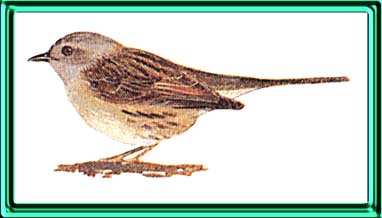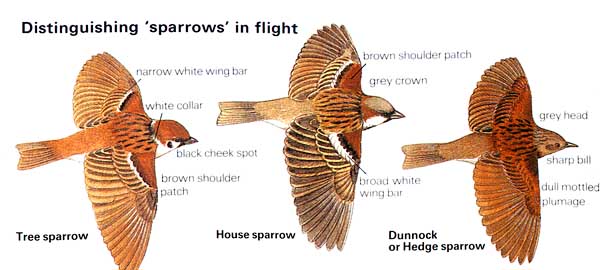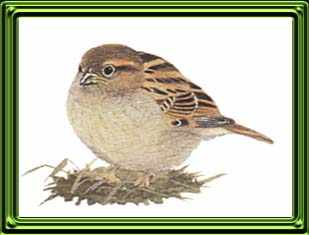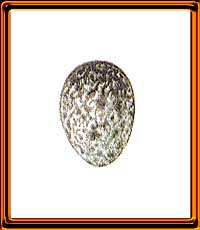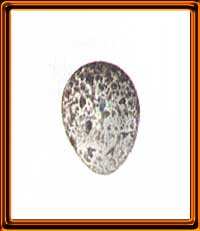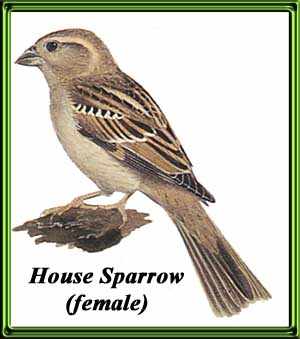
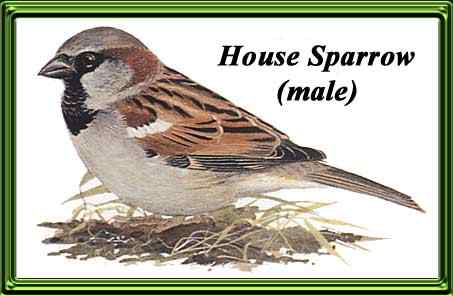
Passer
domesticus
(House Sparrow)
General:Though probably the most often seen of British birds, sparrows are not the most numerous but are outnumbered by chaffinches and blackbirds. Sparrows appear numerous because they live in close proximity to man, building untidy nests not only in holes, in thatch and in hedges, but also in loading bay canopies, superstores and in fact anywhere that that will give them an easy food source.
There are only two varieties of sparrow that live in this country: 1.The House Sparrow 2. The Tree Sparrow. The bird which is commonly known as the Hedge Sparrow is in fact The Dunnock Prunella modularis and not a sparrow at all, though it is similar (see picture below).
So pest controllers beware as the Dunnock is a protected species, actually the main give-away is the pointed beak, the sparrow's is more triangular, the Dunnock has a more Robin shape and attitude.
House Sparrow:
The cock house sparrow is an attractive bird with a rusty back, black bib and grey crown and cheek patches. The hen bird is more of a dull brown all over, smaller than the male (see pictures above), and is very similar to the juvenile house sparrow (see picture below).
Biology:
Size: Has a length of 5.75 inches.
Habitat: Everywhere, but especially on farms and near human habitation.
Nest: Made of straw and feathers, loosely made in a hole in a building or wall, under eaves and in thatch.
Eggs: Lays 5-6 eggs and may have 2-3 broods/year. Eggs are grey/white speckled with black/brown markings.
Hatch Time: The hens incubate for 12-14 days after which both parents feed the young which can fly at 15 days.
Food: Grain, seed, insects according to the text books, however, sparrows are now largely dependant upon man for food and for nesting sites and hence appear in great numbers in urban areas. Because of the practice of feeding birds, most survive the winter to cause damage in allotments, farms, and market gardens. In the autumn, flocks of sparrows feed on ripening split corn. Besides damaging grain, sparrows disbud plum trees, currants and gooseberries and tear at crocuses, primroses, polyanthus, chrysanthemums and lettuces. In cereal growing areas, the house sparrow is considered a serious pest and under the Protection of Birds Act 1954, may be taken or killed by the owner or the occupier of the land or somebody authorised by them.
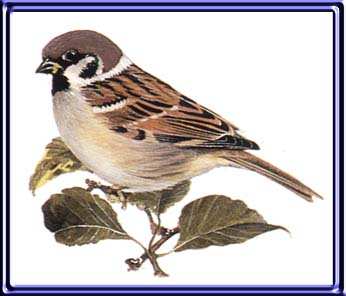
(The Tree Sparrow)
The Tree Sparrow differs from the House Sparrow in having a much smaller bib and a bright chocolate brown cap. There is also a noticeable black patch on the white cheek with the back being streaky orange-brown and the bird is slightly smaller and slimmer. The cock and hen birds are alike.Biology:
Size: About 5.5 inches in length.
Habitat: As its name implies it is a bird of the country frequenting woodland and well-treed farmland, and unlike the House Sparrow, avoids the dwellings of man.
Nest: Usually in a hole in a tree, quarry or old wall, in a colony with others. The materials are similar to those of the House Sparrow...an untidy collection of straw and feathers.
Eggs: The Tree Sparrow lays between 4-6 eggs which are brownish, speckled and blotched all over. The eggs are laid April-June and can have 2-3 broods.
Hatch Time: This is similar to the House Sparrow.
Food: Insects and weed seed, this species causes little damage to crops.
Back to main Pest Bird page and treatments
